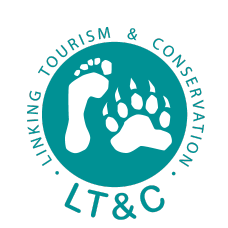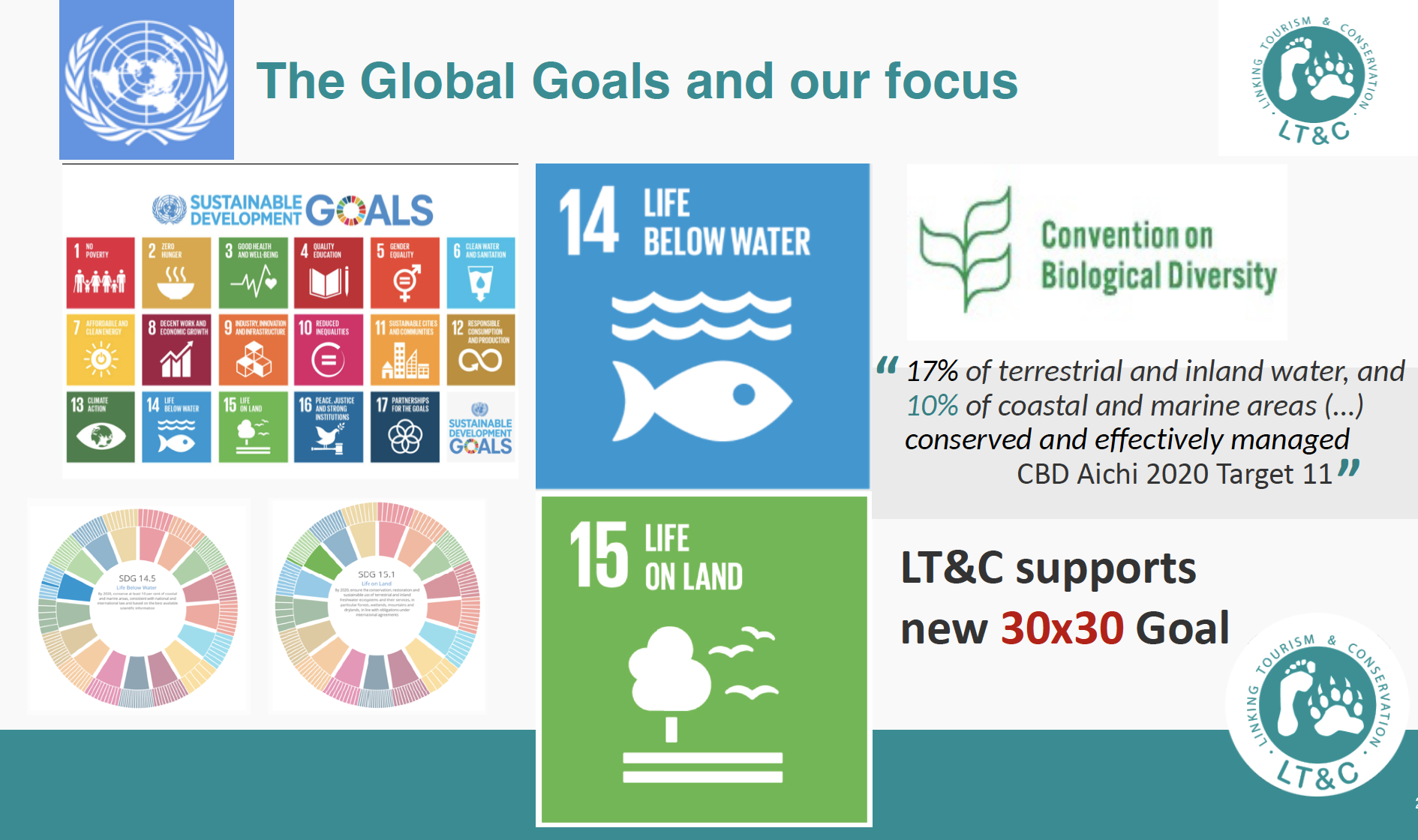by Peter Prokosch
With the decisions at our Annual General Meeting (AGM) on May 4, 2022, in Berlin and via Zoom, a new promising phase of LT&C has started. New and younger Board members unanimously have been elected as well, as the merger with Ecological Tourism in Europe/ Ökologischer Tourismus in Europa (Ö.T.E.) has been decided.
I am personally delighted that my highly professional and experienced LT&C colleague, Diana Körner, is succeeding me as Chair of the Board and that I now, as “Honorary President”, have all freedom to follow and support the organisation further. With Michael Meyer, the key driver of Ö.T.E. for 30 years, elected as Co-Chair, it is secured that the planned merger will be implemented in a smooth way.
I, in particular, like to thank my colleague in Norway, Ottar Nakken. We founded LT&C in 2014, and these eight years of steering the organisation together were full of mutual complementation and pleasure. We both announced two years ago that we would like to pass on the baton to younger colleagues. We are glad that this happened now in a compelling and unanimously supported way.
Altogether the new Board consist now of three new members. In addition to Michael Meyer, our famous African representative from Rwanda, Greg Bakunzi, joined and also Harald Förster, the CEO of our founding member Schutzstation Wattenmeer. Our colleagues and LT&C-experienced members Denise Landau, Sergio Chirandini, Oliver Hillel, and Diana Körner (now Chair) will continue on the Board. I like to thank also our former Board colleague Anne Franze-Jordanov, who decided to focus in the future on her valuable engagement in our working groups. See the further information about the new Board of LT&C on the website.
Taking this opportunity, I will very briefly describe what I believe have been the four phases of LT&C up to now and how, from my perspective, we look into the future of LT&C.
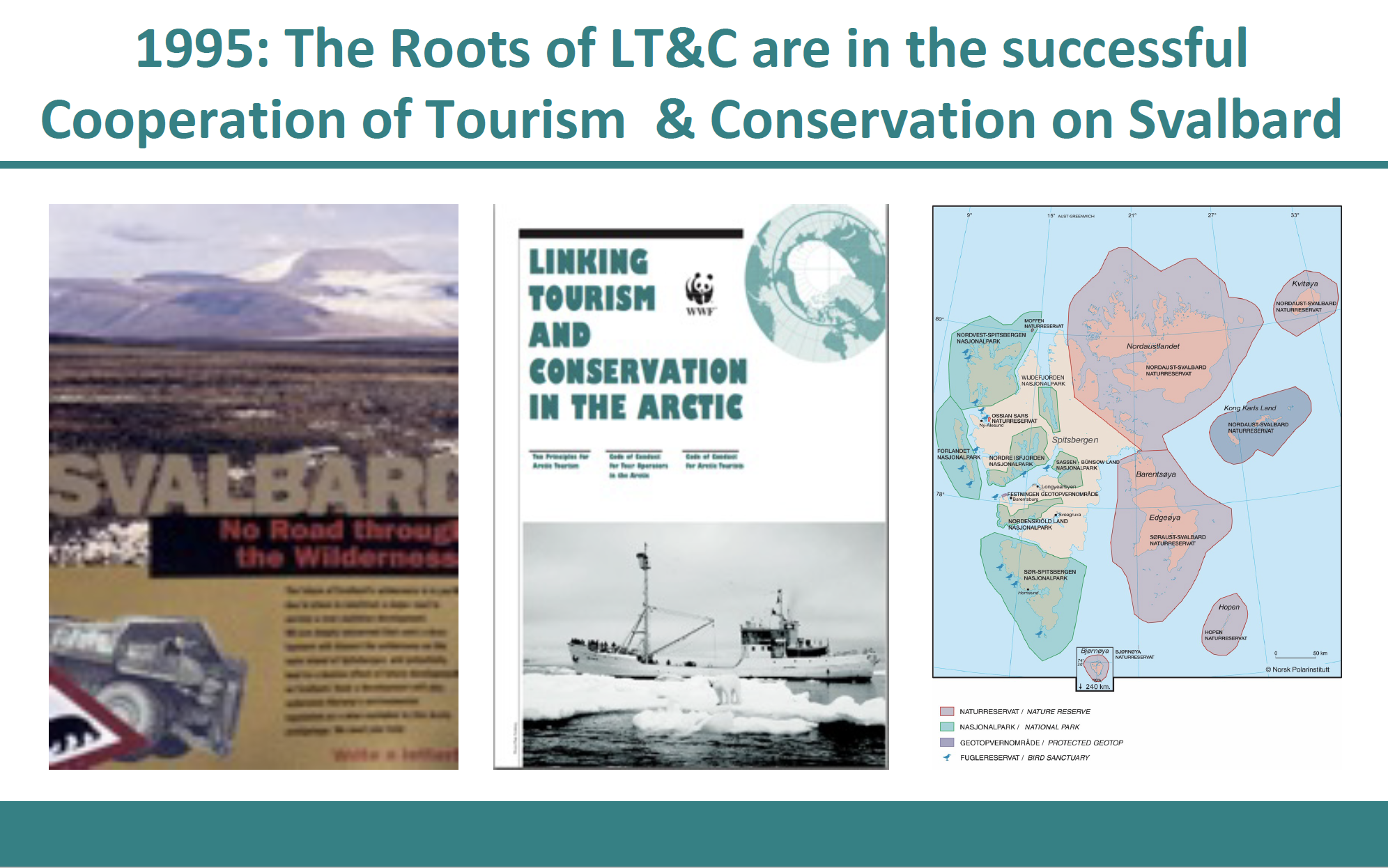
What we later profiled as one of our LT&C-Examples happened already in 1995 and can be seen as a real big success story and the start of the first phase. Tour companies and conservation NGOs had joined forces to campaign against the first long-distance road on Svalbard. This cooperation resulted in major decisions of the Norwegian government for the future of this high Arctic archipelago: They not only cancelled the road plan, but Norway raised it as its state goal to tread Svalbard as “the best-managed wilderness area in the world”.
Several new national parks protecting particular tundra habitats were established as well as an environment fund. The entrance fees of travellers to Svalbard are now financing the management of Arctic wilderness. This impact of tourism and conservation cooperation resulted in further joint work. Arctic tourism guidelines, called “Linking Tourism and Conservation in the Arctic“, were developed, published in all Arctic languages and tested with different tour operators.
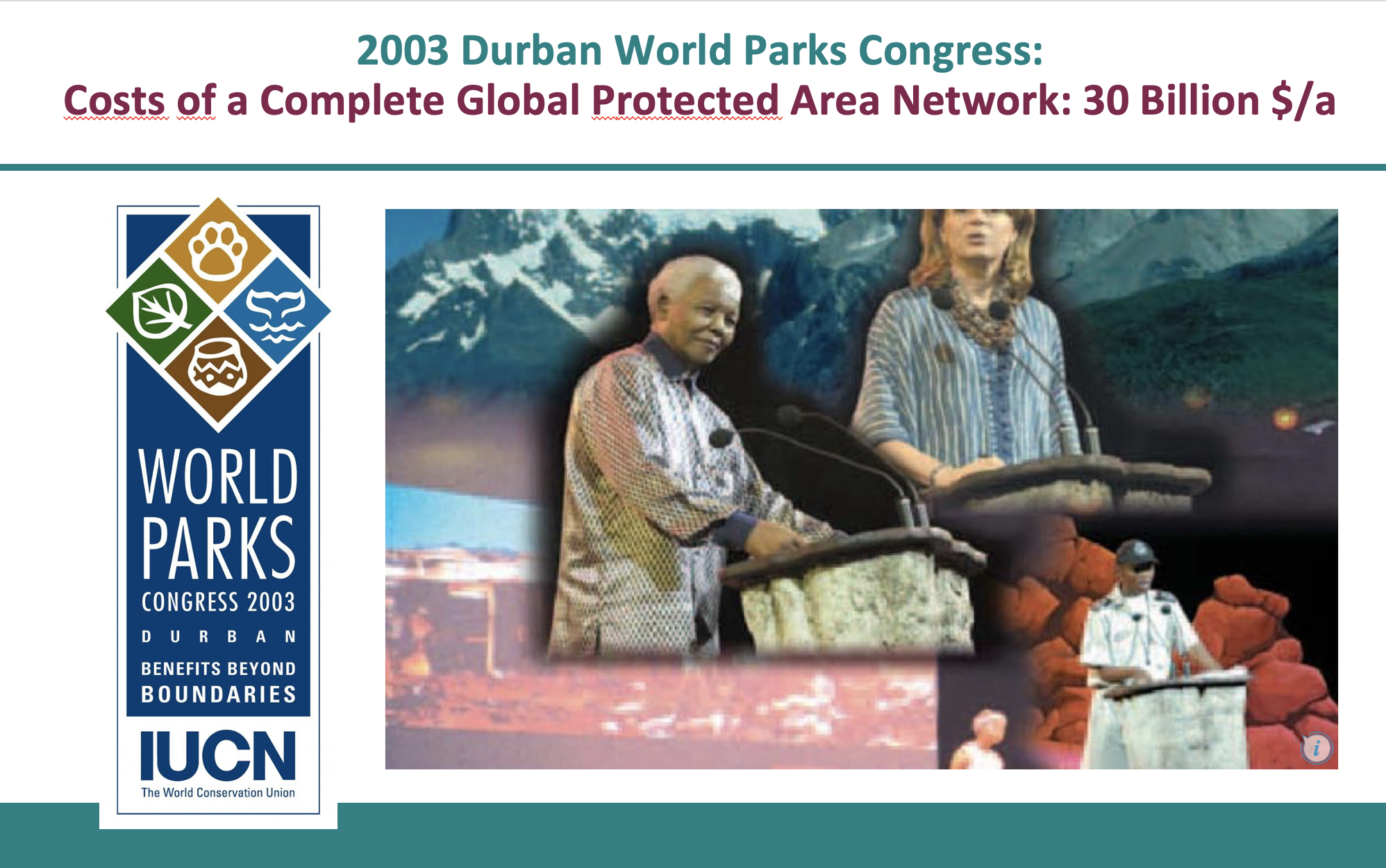
2003 with the IUCN World’s Park congress in Durban, new thinking started. A new figure came into the world and was discussed: if a complete, representative and well-managed global protected area were in place, the annual costs for maintaining and managing it was calculated to be about 30 Billion US$. Tourism, often based on and benefiting from beautiful and intact nature, and with a world turnover already at that time of more than 200 times larger than 30B$, came to mind to secure these finances.
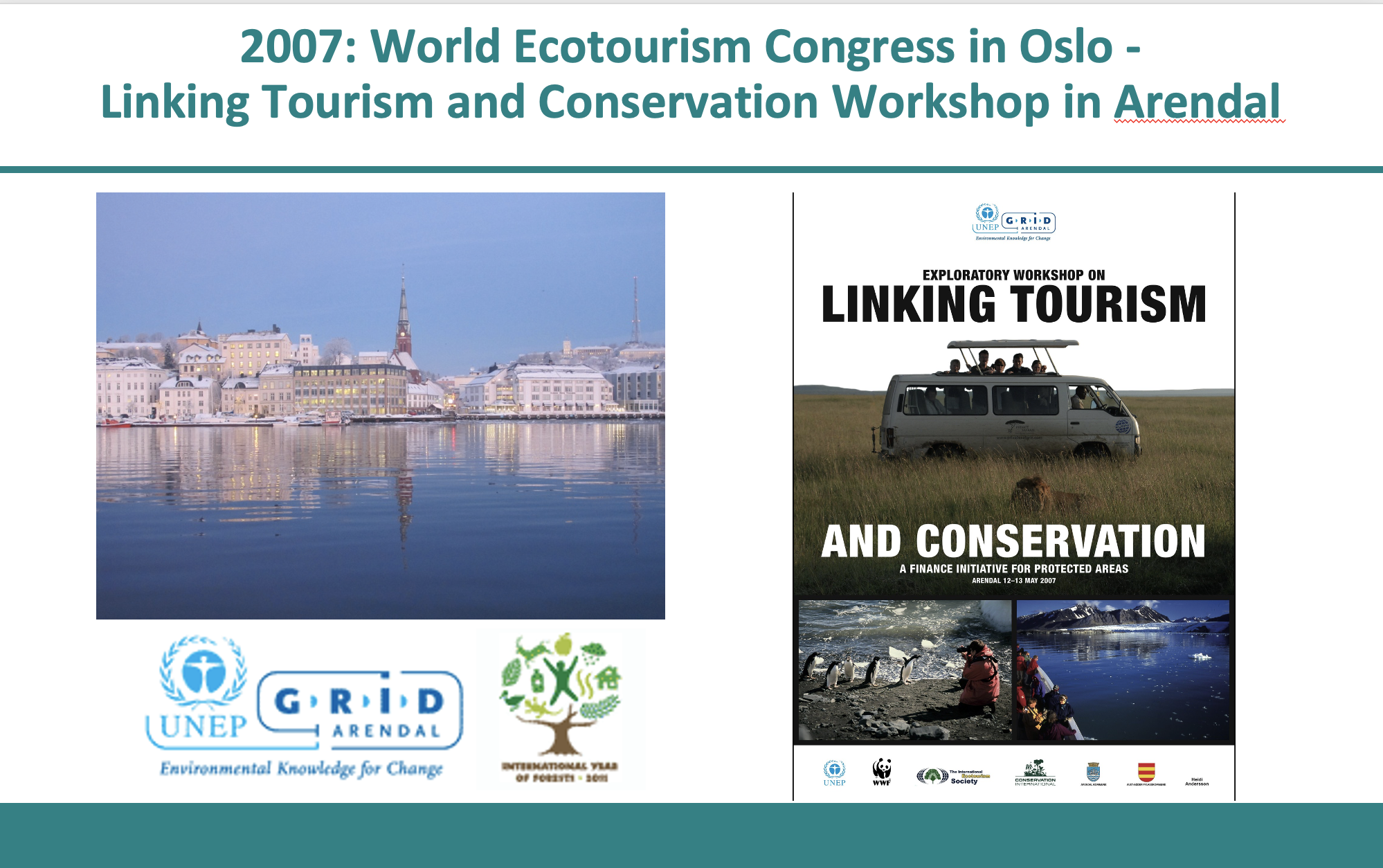
Four years later, in the spring of 2007, GRID-Arendal took the opportunity to invite for a workshop in Arendal called “Linking Tourism and Conservation – a Finance Initiative for Protected Areas”. The workshop was performed in close cooperation with the World Ecotourism Congress, which took place at the same time in Oslo. Participants from all over the world could make a short detour through Arendal and discuss existing examples where tourism is financing protected areas.
Several convincing examples, reaching from simple entrance fees to significant investment funds and the countrywide example of Costa Rica, came already on the table. As a follow-up to the workshop, GRID-Arendal started to run a project under the name “Linking Tourism & Conservation (LT&C)”, led by Christina Cavaliere. She had managed the World Ecotourism Congress in Oslo. The project identified cases where tourism supported the establishment or development of protected areas added to financial- political- and educational support and called it “LT&C-Examples”.
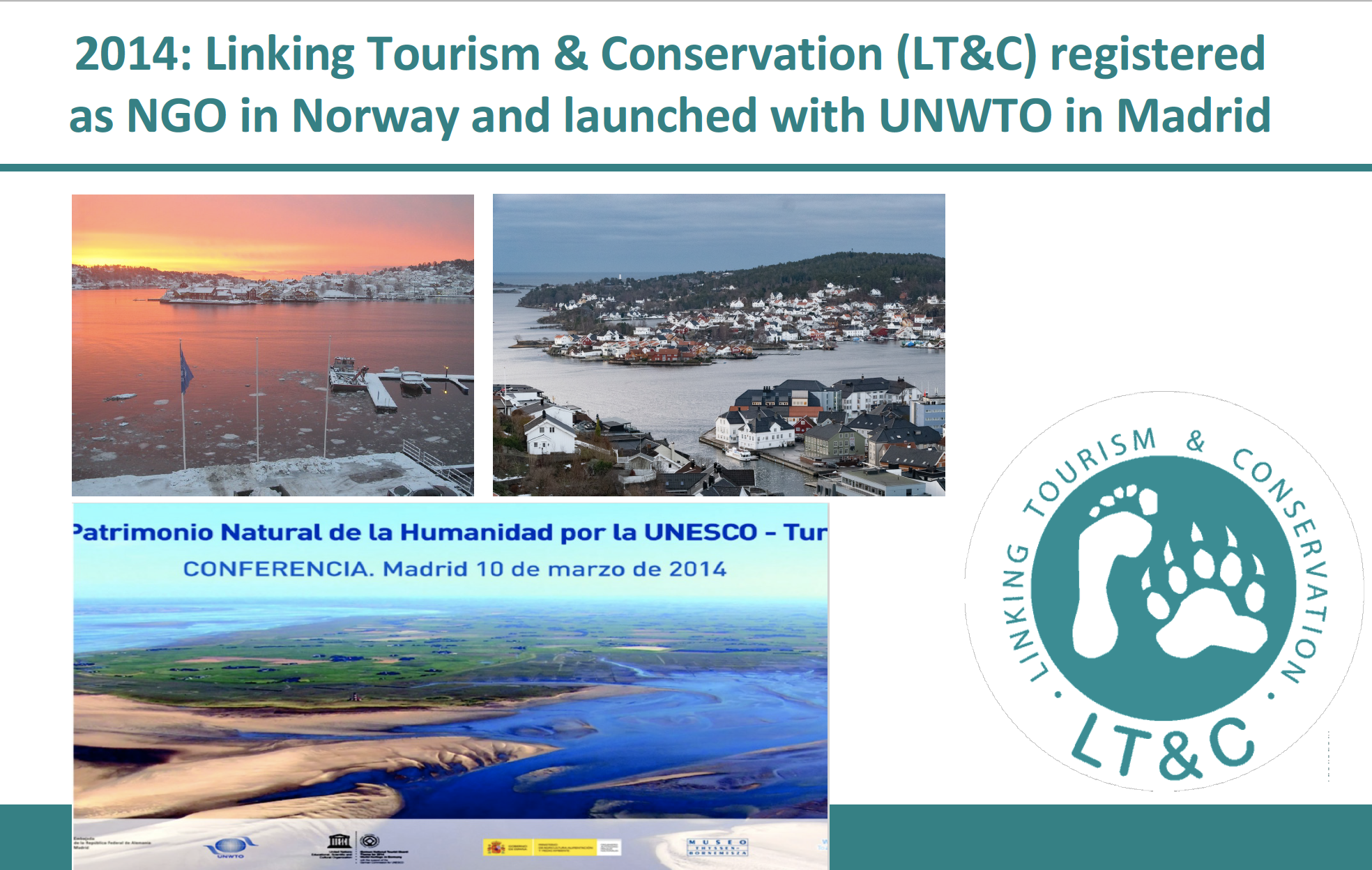
2014, coinciding with my retirement at GRID-Arendal, Ottar Nakken and myself founded “Linking Tourism & Conservation (LT&C)” as a Norwegian registered global membership NGO. The organisation was publicly launched at a conference on March 10, 2014, in Madrid, hosted, among others, by UNWTO, UNESCO World Heritage and the German Embassy in Spain.
Soon we gathered members from all continents and from both realms, conservation and tourism, spread through all levels of society, from individual tourists to conservation experts and organisations, tour operators and consultancies or representatives of UN organisations. Over the years we grow up to 320 members distributed all over the world. Our main activity was to identify, publish and profile LT&C-Examples with the intention that others learn from and replicate them.
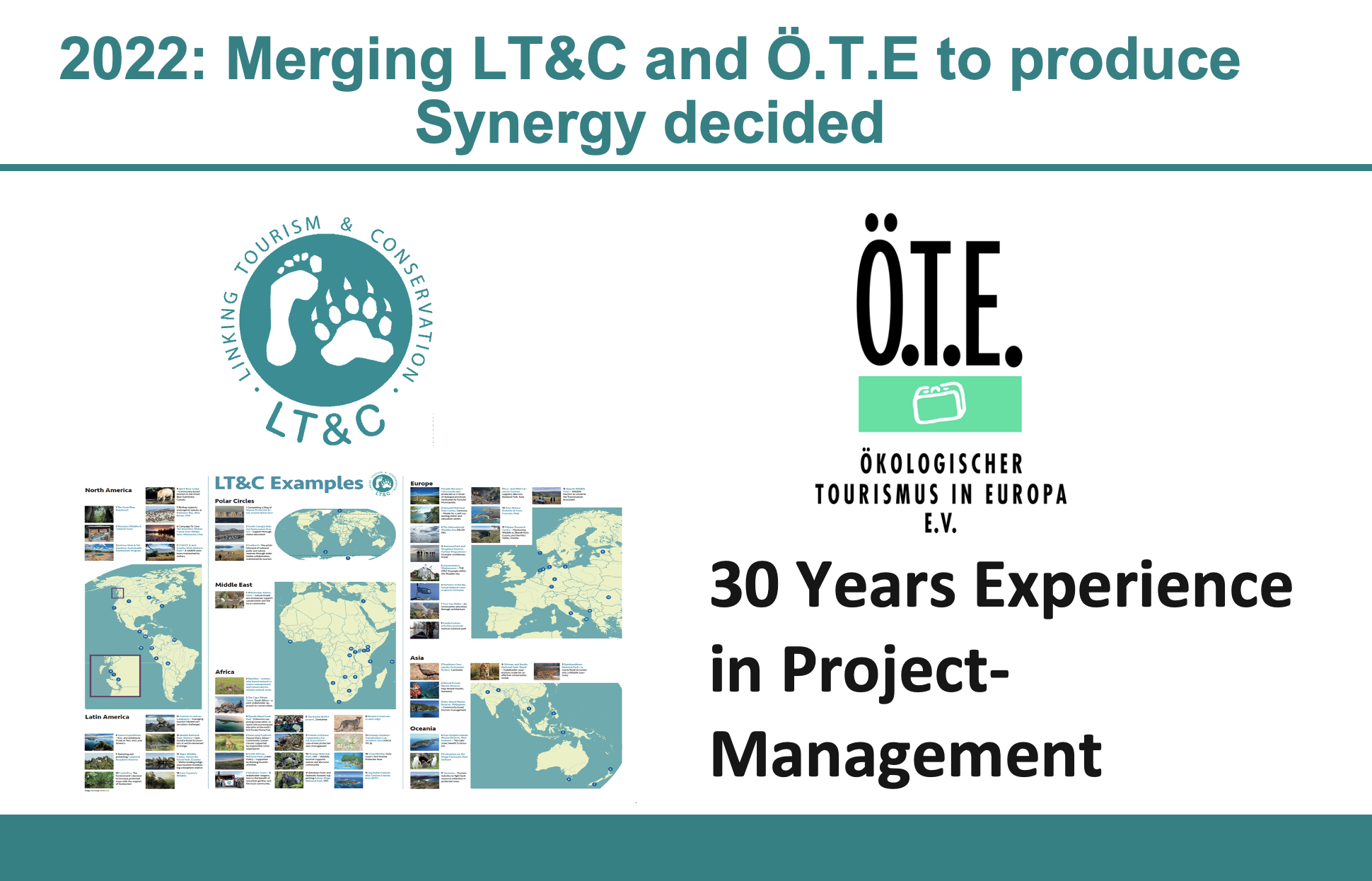
Over the years, we performed, or took part in many international events and organised study tours to mainstream our mission and the excellent examples of tourism supporting protected areas. We were involved in smaller projects (such as recently in Slovakia) and partnered globally with many influential organisations and institutions. Compared to our size, we believe LT&C gathered quite some reputation as a global player for a critical mission related to the Sustainable Development Goals (SDGs) 14 & 15 on marine and terrestrial biodiversity.
However, all our work so far was entirely based on voluntary shoulders, and our modest financial and administration base did not allow us to engage in larger projects. If now the world is striving to protect worldwide 30% of the land and sea, the so-called 30×30 goal, and we want to contribute to reaching this goal significantly, we need to think bigger and engage in much more extensive 30×30 targeted projects.
In this context, the AGM 2022 decision to merge with Ö.T.E., an organisation with 30 years of experience running ecotourism projects, comes just in time and can be seen as the 5th phase of linking tourism and conservation. Together with my colleagues and our members, I believe in this merger and foresee the following synergies:
- Joining forces with a well-functioning recognized and trustworthy partner and gain administrative capacities, build on the established legal framework of ÖTE;·
- Having Michael Meyer as a key person to handle the merger and ensure that the initial set-up is successful, this way LT&C will be able to have a solid base in Germany;
- Increase ability to engage in larger 30×30-targeted projects by transiting from a purely voluntary to a more project-based organisation, which allows for paid personal and financial stability;
- By bringing together major strengths of LT&C (a global network of members & partners professional in both conservation & tourism; reputation in relevant circles such as CBD and IUCN; our LT&C-Examples) with those of Ö.T.E. (a professional eco-tourism-project-performing organisation with a 30-year track record in Europe;·
- With the German League for Nature Conservation (DNR) as its main member, it gains support from the most relevant conservation NGOs in Germany; good relations and experiences with the German Environmental Ministry and UN organisations;
- Major potential to become a much more powerful, influential and impacting organisation·Opportunity for an increased number of members and more actively engaged experts;
- Amplification of both organizations’ reputation·In case of a re-launch of the LT&C Study Tour Program, will certainly reduce risks and liabilities while receiving more visibility through Ö.T.E.’s established network.
